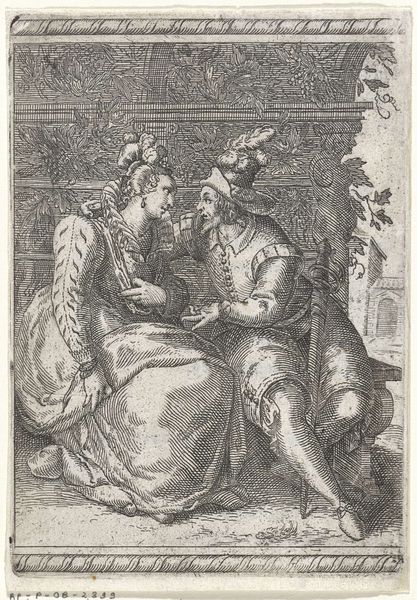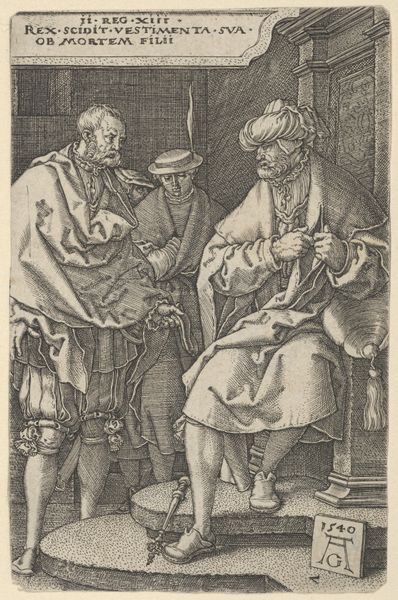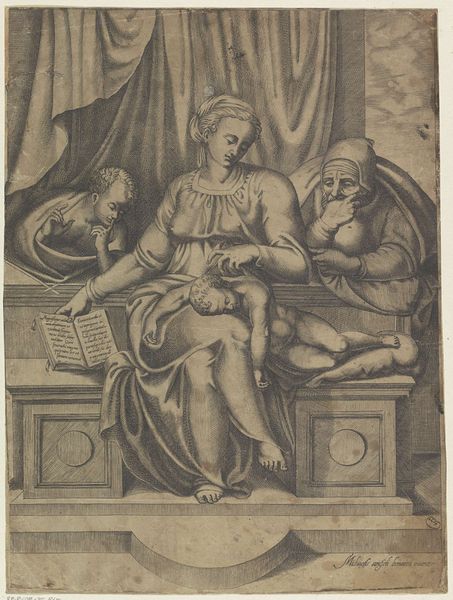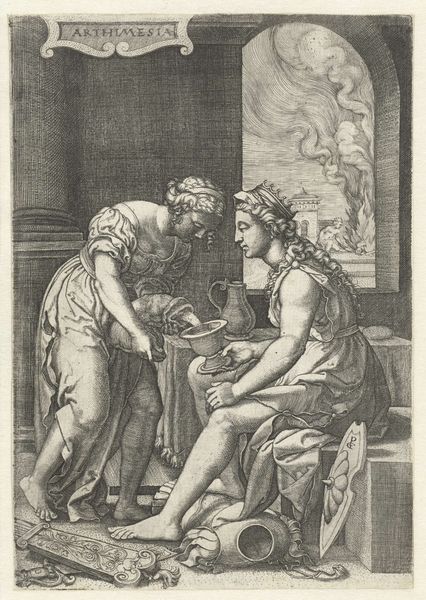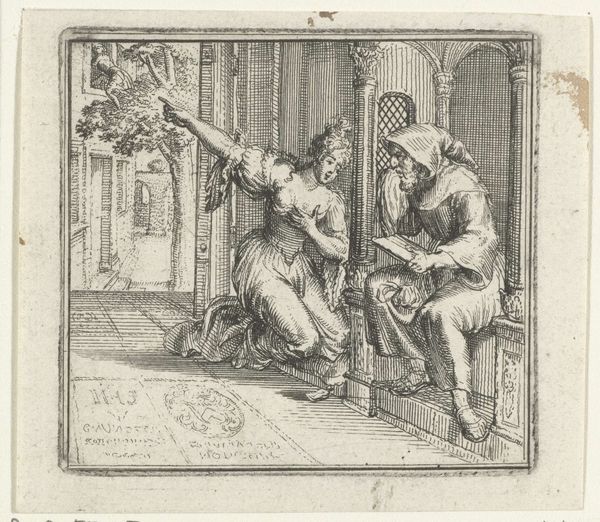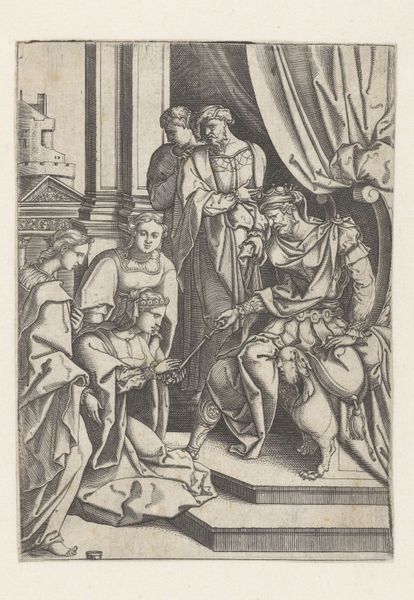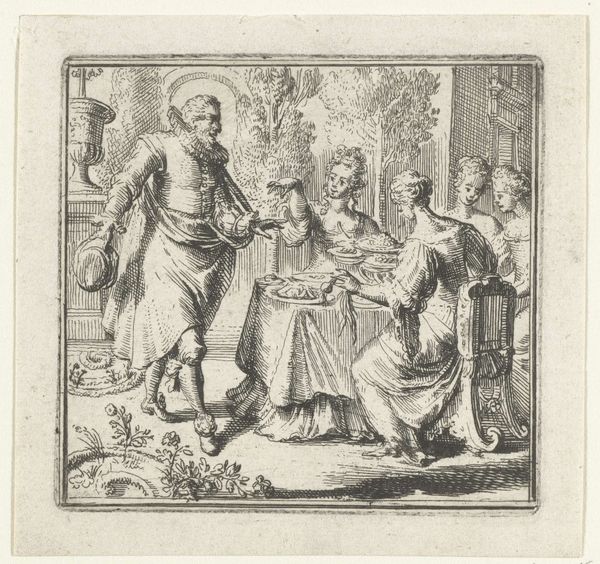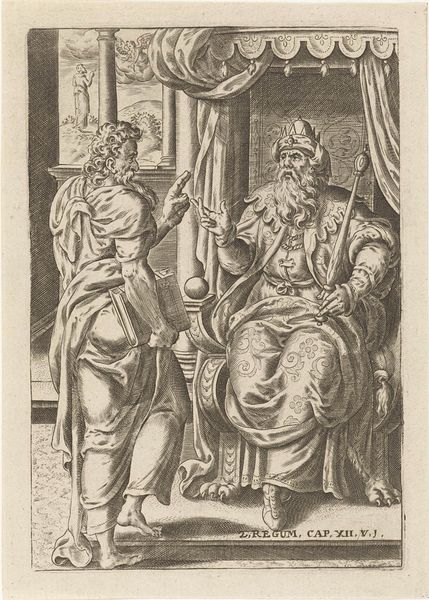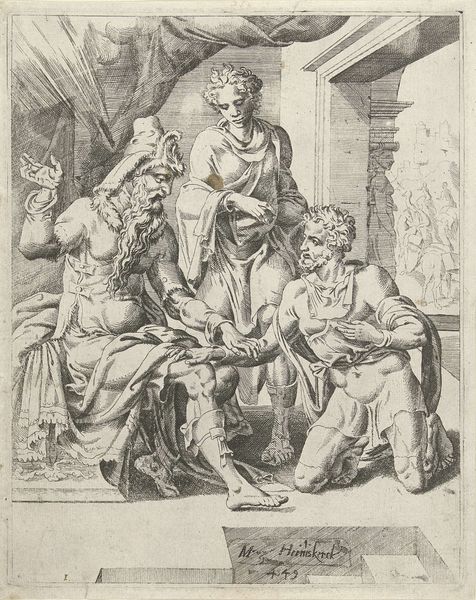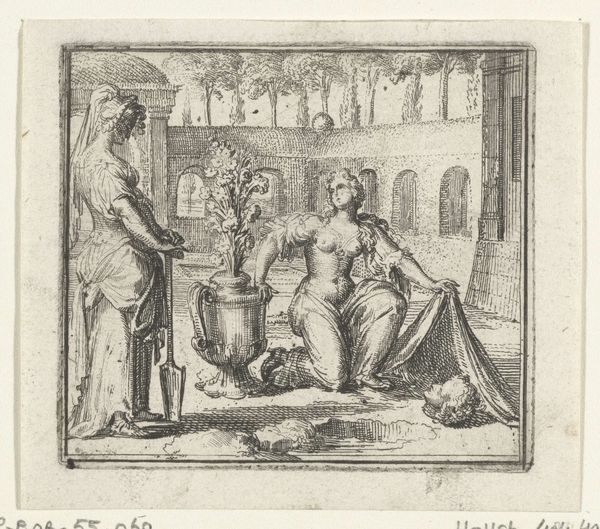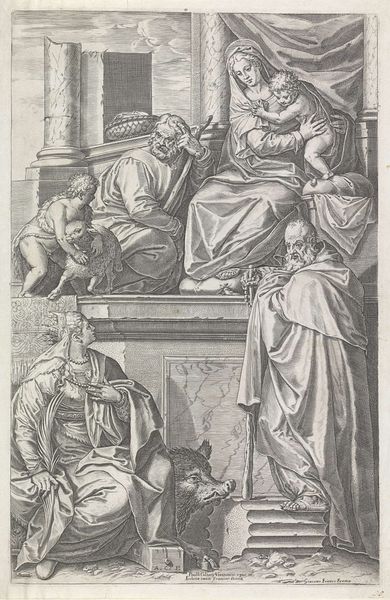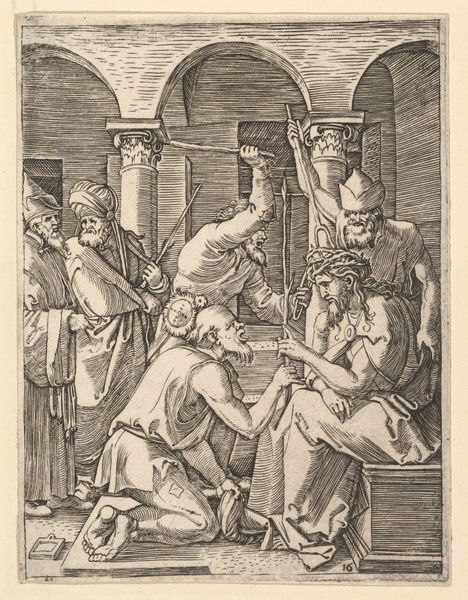
print, ink, engraving
#
medieval
# print
#
pen illustration
#
pen sketch
#
old engraving style
#
figuration
#
ink
#
pen-ink sketch
#
pen work
#
sketchbook drawing
#
history-painting
#
northern-renaissance
#
engraving
Dimensions: height 64 mm, width 46 mm
Copyright: Rijks Museum: Open Domain
Curator: What a remarkably intimate engraving. It’s titled "Evangelist Matteüs," made in 1578 by Abraham de Bruyn. It currently resides at the Rijksmuseum. Editor: It feels almost… tactile. The stark contrasts and meticulous linework give a very tangible quality to the scene. Like I could feel the texture of the paper it's printed on. Curator: Yes, precisely! This portrayal leans into the symbolic importance of the Evangelist Matthew. Observe how the angel whispers into his ear, guiding his writing—a key symbol of divine inspiration, deeply ingrained in Christian iconography. It emphasizes Matthew's role as a conduit for divine word. Editor: I'm drawn to the labor behind this. De Bruyn meticulously cut lines into a metal plate to produce this image. You have to appreciate that such detail comes from laborious, skilled craft. Each tiny line suggests a kind of intensity, a conscious choice. Curator: And those choices serve a higher purpose. Consider how the quill, the inkwell, even the architectural elements like the column in the background, aren’t mere decorative additions. They act as anchors that tie Matthew and his work to the broader narrative of divine will, emphasizing enduring wisdom. Editor: Yet there's a grounded quality to Matthew himself. Note his bare feet, his comfortable posture… it makes him more relatable, somehow less ethereal and divine and more rooted in human toil. Also, there is the evident wear of the materials. Did the printing process reinforce the sense of its dissemination to a wide audience? Curator: An excellent point! The act of printmaking enabled these ideas and images to circulate widely, reaching an audience far beyond the elite. Think of this single image multiplied into countless impressions, spreading its symbolic language far and wide. It is a crucial insight to understanding it as a cultural object, produced and disseminated. Editor: I now think that this wasn’t simply religious propaganda—instead it shows the convergence of art, craft, belief, and mass production! Curator: Indeed. The confluence of intention and method in spreading faith and art is fascinating. Editor: Absolutely. It makes one consider all the complexities—a seemingly simple print, so rich in layers.
Comments
No comments
Be the first to comment and join the conversation on the ultimate creative platform.
